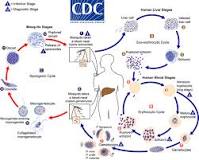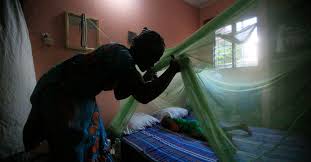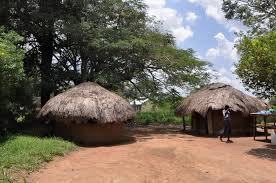Mosquitoes &Uncategorized &Vector Control Bill Brieger | 19 May 2019 08:57 am
Malaria – an old disease attacking the young population of Kenya
Wambui Waruingi recently described her experiences working on malaria in Kenya on the site, “Social, Cultural & Behavioral Issues in PHC & Global Health.” Her thoughts and lessons are found below.
Malaria is an old disease, and not unfamiliar to the people of Lwala, Migori county, Nyanza province, situated in Kenya, East Africa. The most vulnerable are pregnant women and young children.The Lwala Community Alliance have reduced the rate of under 5 mortality to 20% of what it was 10 years ago, and about 30% of what it is in Migori county (reported 29 deaths/ 1000 in 2018) https://lwala.org/wp-content/uploads/2019/02/Lwala-2018-Annual-Report.pdf

Of the scourges that remain, malaria is one of them.

Malaria is caused by a protozoal species called Plasmodium spp; the most severe is Plasmodium falciparum, the predominant type in the region.It’s life cycle exemplifies evolution at it’s most sophisticated, albeit vulnerable, needing two hosts of different species to complete it’s life cycle, the mosquito, and mammalian species in stages of asexual then asexual reproduction respectively. https://www.mayoclinic.org/diseases-conditions/malaria/symptoms-causes/syc-20351184https://www.cdc.gov/malaria/about/biology/index.html

The mosquito types responsible for malaria in the area are A. gambiae spp and A. arabiensis spp. To complete it’s life cycle, the mosquito requires water, or an aquatic environment to develop it’s larvae. This insect therefore seeks to lay it’s eggs in pools of fresh water, abundant in the area due to Lake Victoria, and important source of the local staple fish, and areas of underdeveloped grassland surrounding the lake and village. https://malariajournal.biomedcentral.com/articles/10.1186/1475-2875-9-62

WHO reported 219 million cases of malaria world wide, with 435,000 deaths in the same year. In this day and age, malaria remains burdensome in 11 countries, 10 of them being in Africa. WHO recommends a focused response. https:// who.int/malaria/en/. I advocate a focus on prevention by eradicating mosquitoes and episodes of mosquito bites in the region. WHO vector control guidelines run along the idea of chemical and biological larvicides, topical repellents,and personal protective measures, such as bed nets, wearing long sleeves and pants (hard to do in the heat of Migori), bug spray and insecticide treated nets. These are effective.
In the area, mosquitoes capitalize on both daytime and nighttime feeding. Lwala benefits from a mosquito net distribution program so there is at least 1 net/ per household and a coverage of about 95%, https://lwala.org/wp-content/uploads/2019/02/Lwala-2018-Annual-Report.pdf, but there is an average of 5.5 individuals per household,
file:///C:/Users/Owner/Downloads/Migori%20County.pdf , so it conceivable that not all children under 5 currently sleep under a net.

Let’s start by making sure they do by scaling up this program, so that the number of nets corresponds with the number of individuals per household.
Lwala is an active community, and while use of nets will eliminate night feeders such as A. gambiae , little children will be susceptible to mosquito bites given that they are outdoors nearly daily helping with activities such as fishing, goat herding, fetching water and so forth. That is why active programs for mosquito eradication make so much sense in the region. While promoting personal prevention measures such as the use of “bugspray” containing effective substances such as DEET, efforts by the Bill and Melissa gates foundation, through the Malaria R&D (research and development) active since 2004, have devoted over $323 million dollars, about 20% ($50.4 million) of which has gone to the Innovative Vector Control Consortium, (IVCC) led by the Liverpool School of Tropical Medicine. The aim is to fast track improved insecticides, both biological and chemical, and other measures of vector control. I suggest that partnership with the IVCC be scaled up in the area, allowing Lwala to be first line in any benefits thereof. https://www.gatesfoundation.org/Media-Center/Press-Releases/2010/11/IVCC-Develops-New-Public-Health-Insecticides, https://www.gatesfoundation.org/Media-Center/Press-Releases/2005/10/Gates-Foundation-Commits-2583-Million-for-Malaria-Research

Finally, it’s official. Research endorses use of nets and indoor residual spraying as an effective way to reduce malaria density. https://malariajournal.biomedcentral.com/articles/10.1186/s12936-016-1214-9. This should be coupled with house improvement, since much of traditional and poverty-maintained materials, allow environments in which the mosquito can hide, to come out later to feed, and even breed. In Migori county, 72% of the homes have earth floors, 76% have corrugated roofs, and 21% have grass-thatched roofs. file:///C:/Users/Owner/Downloads/Migori%20County.pdf

All these promote a healthy habitat for the mosquito during the rainy season, and easy entry and hiding places all year round. Funding to improve house types so that locally-sourced but sturdy, water-proof homes can be built, will eliminate opportunities for the mosquito to access and bite young children.
Let’s get stakeholders vested in this effective, yet economical way to address malaria deaths in the youngest children. Starting now, funding should be diverted from costly treatments with ever mounting resistance patterns, to causing extinction of the Anopheles mosquito in Migori county. “An ounce of prevention is worth a pound of cure”http://drjarodhalldpt.blogspot.com/2018/02/an-ounce-of-prevention-is-worth-pound.html

on 19 May 2019 at 4:16 pm 1.Malaria – an old disease attacking the young population of Kenya said …
[…] Read this article: Malaria – an old disease attacking the young population of Kenya […]